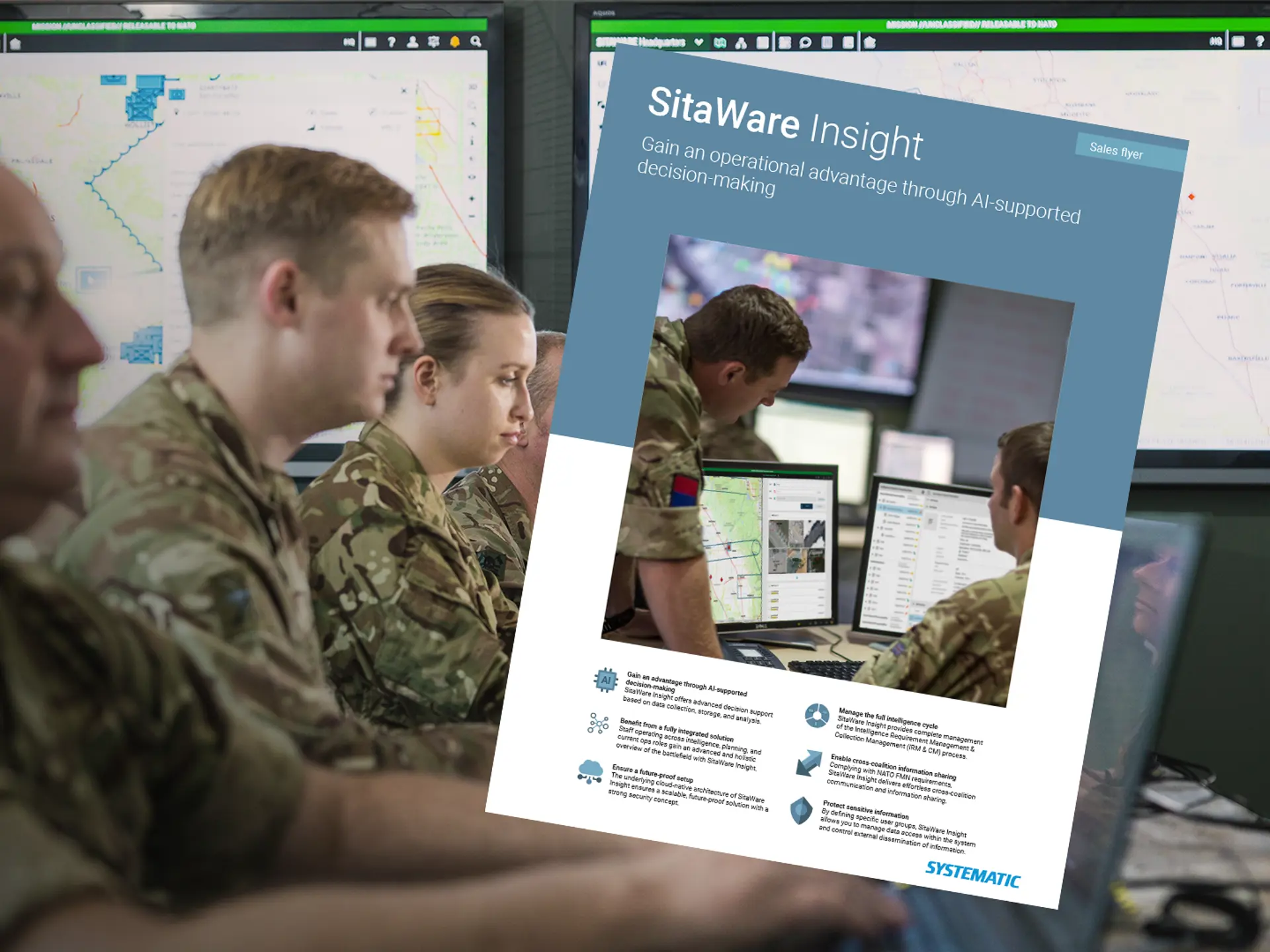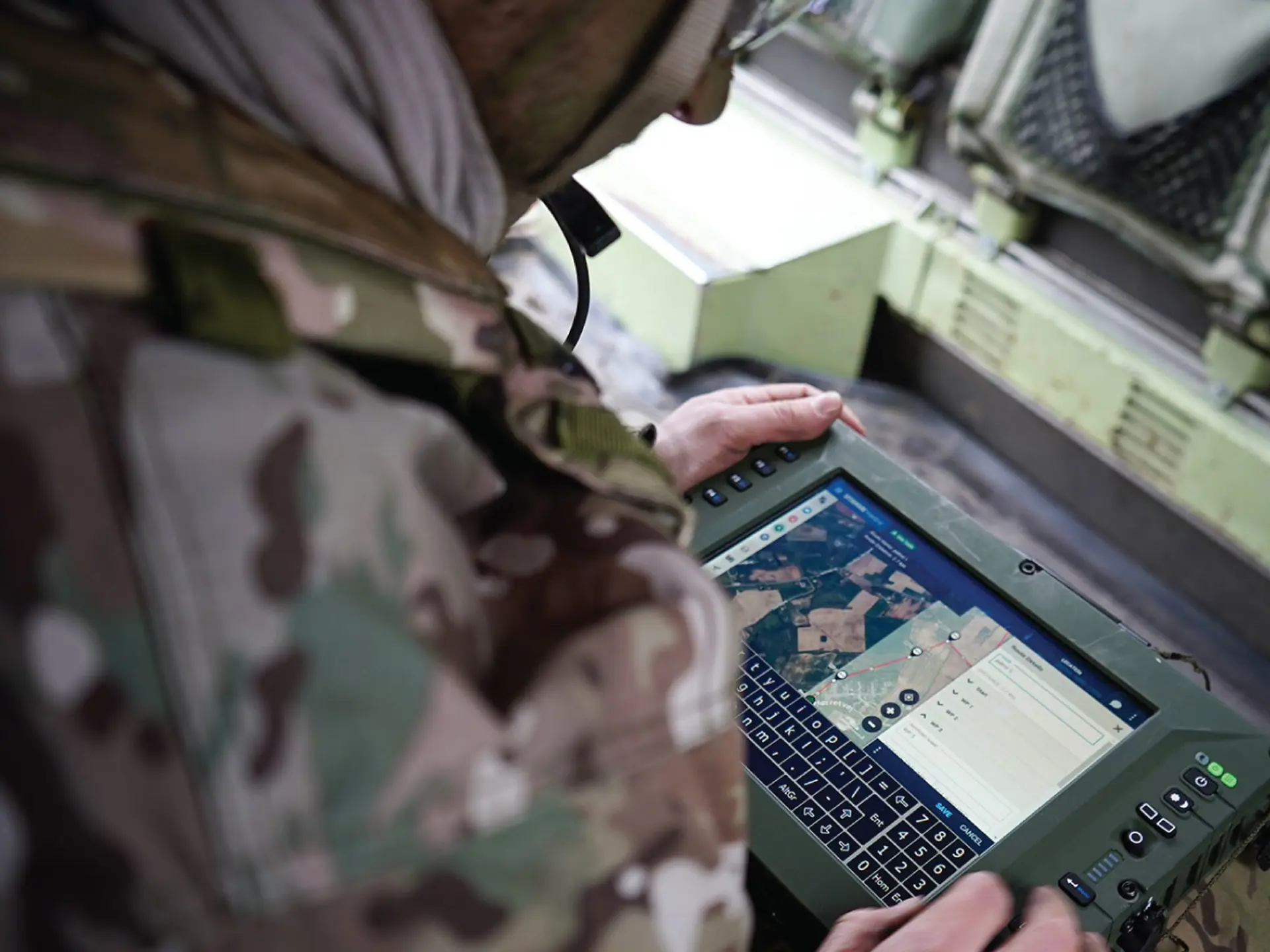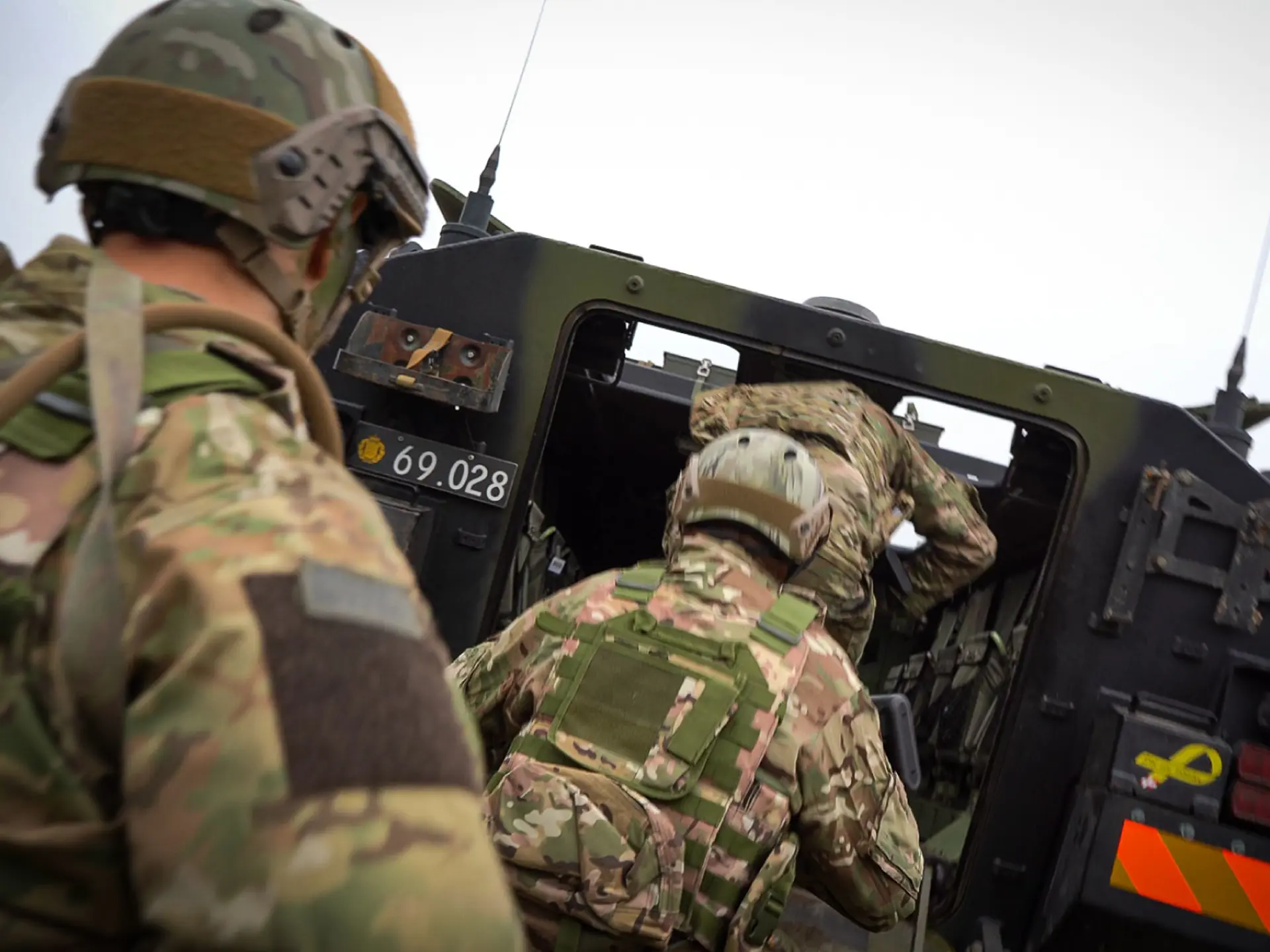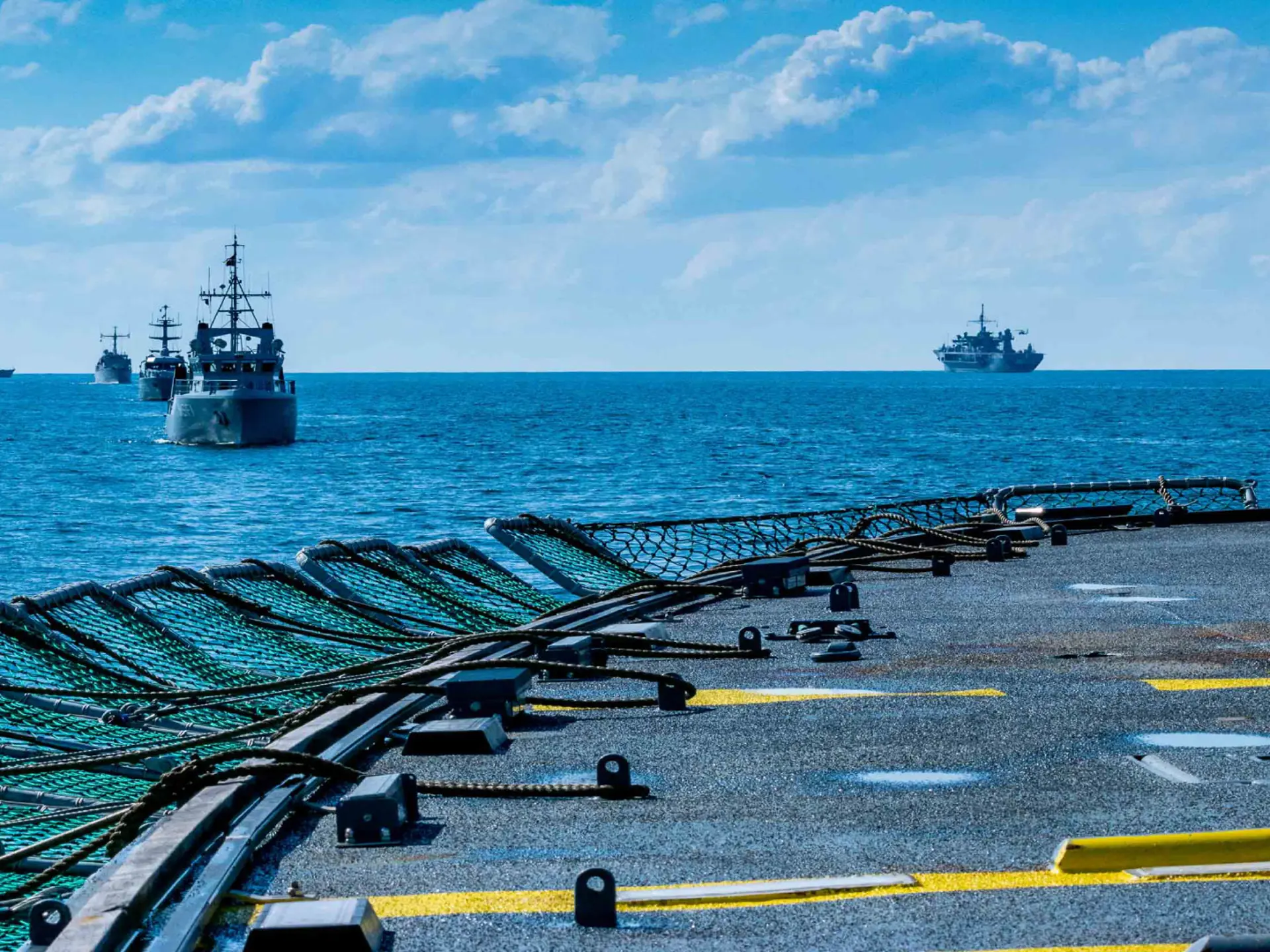Can you spot the one track among the thousand? As the number of sensors increases, so do the number of data points available to a system user. When combined into data streams, the risk of overwhelming intelligence analysts working on targeting and data fusion increases – particularly when duplicate tracks from different sensors are reported.
As a result, the potential to miss critical one-off, or irregular, events can allow an opponent to have the element of surprise or obtain a decisive edge.
Utilising an artificial intelligence (AI) tool known as anomaly detection, out-of-the-ordinary events can be flagged for further investigation and reacted to in a shorter period of time. This allows users to respond rapidly to possible illegal or hostile events; or identify early preparations for military action.
How we work with anomaly detection
Systematic deploys anomaly detection tools as a key part of its decision-support capabilities. Utilising anomaly detection helps with the improved deployment of staff onto higher priority tasks, or those which demand greater levels of expertise. By allowing an AI engine to perform anomaly detection, a wide range of possible outcomes to unusual activity can be identified, and ultimately prepared for, while maximising the capabilities of your planning and intelligence teams.
Operating as a standard support tool, this allows SitaWare users to gain a decisive edge when dealing with the increasing volumes of data being supplied, while ensuring that commanders can utilise their staff intelligently. Establishing a pattern of life is a key aspect of the anomaly detection technology, and then allows for further analysis by AI technology. Systematic has deployed this technology in the maritime domain to establish a recognised maritime picture for naval commanders and facilitate the creation of alerts.
Pattern of life analysis
Key to the development of an anomaly detection technology is the establishment of an understanding of a pattern of life. Understanding the pattern of life involves the recording of tracks from sensors and emitters to discover regular flow of traffic – discovering what is “normal”.
In certain domains – such as at sea and in the air – these parameters are assisted by the establishment of traffic corridors to help regulate the movement of craft and avoid collisions. The use of multiple sensor systems ensures that the maximum amount of data related to an object can be obtained, and then sent to a C4ISR platform. At this point, an AI engine can take over and perform further aggregation, fusion, correlation, and deduplication to create an accurate overview. Establishing a historical database allows for greater understanding of the pattern of life, helping an AI engine highlight anomalies when there are changes to normal patterns of life.
Maritime surveillance
The maritime domain has benefitted from a significant increase in the number of data streams that can be used to increase situational awareness. In addition to ship-based radars, Automatic Identification System (AIS) transponders help to locate vessels, while airborne and land-based sensors can also track vessels and add to the Recognised Maritime Picture (RMP).
Within SitaWare Maritime, the variety of sensor feeds are fused into a single RMP, with correlation and de-duplication of tracks supporting an intelligent overview of the maritime domain. A pattern-of-life is then established, which helps to show what normal activity is like in the area.
When unusual activity takes place – such as a vessel departing from a standard sea lane, the presence of an unusual vessel in a new area, or two vessels meeting at sea – then operators in a Maritime Operations Centre or on a vessel are alerted. This means that they can then respond and investigate if needed, or continue monitoring for possible further action.








